Top C++ Embedded Systems Programming Tips for Hobbyists
Category: Embedded Systems
Mastering C++ for Embedded Systems: Essential Tips and Tricks
If you’re a tech enthusiast, hobbyist, or developer diving into embedded systems programming with C++, you already know the challenges of balancing performance, memory constraints, and hardware-specific quirks. Whether you’re working on Raspberry Pi projects, microcontroller applications, or complex embedded solutions, finding practical, actionable guidance tailored to modern embedded C++ is critical. You’ve likely searched for tips on writing efficient, maintainable, and robust embedded code that handles real-time constraints and limited resources without sacrificing clarity.
This post cuts through the noise by focusing exclusively on effective C++ embedded systems programming strategies honed from expert recommendations and best practices. You won’t find generic advice here — instead, you’ll get a curated outline covering how to optimize memory usage, design for concurrency, leverage modern C++ features appropriate for embedded environments, and debug low-level issues. Whether you’re moderately experienced or making the leap from high-level app development into embedded programming, this guide will help you write cleaner, safer, and more performant C++ code tailored to embedded hardware.
Read on to uncover proven techniques that make your Raspberry Pi and microcontroller projects smoother and more reliable — enhancing your development workflow and ultimately saving time and frustration.
- Mastering C++ for Embedded Systems: Essential Tips and Tricks
- Understanding Embedded Constraints: Memory, Performance, and Power Limitations
- Choosing the Right C++ Features for Embedded Systems
- Effective Memory Management in Embedded C++: Static vs Dynamic Strategies
- Low-level Hardware Access and Abstraction Techniques in C++
- Concurrency and Real-Time Programming Considerations in Embedded C++
- Debugging and Testing Embedded C++ Code: Tools and Techniques for Resource-Constrained Systems
- Best Practices for Embedded Software Architecture: Modularity, Layering, and API Design
- Optimizing Build Systems and Toolchains for Embedded C++
- Leveraging Open-Source Libraries and Frameworks in Embedded C++ Projects
- Security and Robustness in Embedded C++ Development
Understanding Embedded Constraints: Memory, Performance, and Power Limitations
When programming embedded systems in C++, resource constraints such as limited memory, strict performance requirements, and power consumption play a pivotal role in shaping your design decisions. Unlike general-purpose computing, embedded devices—ranging from low-power microcontrollers to compact Raspberry Pi boards—operate within tight physical and operational boundaries that directly impact how you write and optimize your code.
Memory Constraints: Optimizing for Limited RAM and Flash
Embedded systems often have severely limited RAM and flash storage, requiring careful management to avoid fragmentation, unexpected overwrites, or memory leaks. In C++, dynamic memory allocation (heap usage) is generally discouraged or restricted in deeply embedded environments due to unpredictable fragmentation and latency. Instead, prioritizing:
- Static or stack allocation to simplify memory lifecycle management.
- Using fixed-size containers like
std::arrayover dynamically growing containers such asstd::vector. - Employing memory pools or custom allocators when dynamic allocation is unavoidable.
These approaches reduce runtime overhead and enhance system stability, especially in real-time or safety-critical applications.
Performance Constraints: Meeting Real-Time and Throughput Demands
Embedded applications often impose stringent timing and performance constraints. Delays caused by complex abstractions or inefficient algorithms may lead to missed deadlines or degraded system responsiveness. When writing C++ code for embedded targets, it’s critical to:
- Minimize expensive operations like virtual function calls and runtime type information (RTTI).
- Leverage compile-time polymorphism (e.g., templates and
constexpr) to enable inlining and optimization. - Avoid heavy use of the C++ standard library components not designed for embedded systems, or selectively use embedded-friendly alternatives.
- Profile and optimize critical code paths with hardware timers and low-overhead debugging tools.
Balancing abstraction and direct hardware control ensures you deliver highly performant code tailored to real-world embedded constraints.
Power Limitations: Writing Code for Energy Efficiency
Power consumption is a top priority in battery-operated or energy-harvesting embedded devices. C++ code design choices can significantly influence the device’s power profile. To write power-efficient embedded software:
- Minimize unnecessary CPU wake-ups by employing interrupt-driven programming instead of constant polling.
- Optimize algorithms for low complexity, reducing CPU cycles and therefore power usage.
- Utilize hardware-specific low-power modes, ensuring your C++ code gracefully enters and exits sleep states.
- Avoid computationally expensive features or libraries that increase processor load without clear benefit.
Understanding the interplay of memory capacity, processing speed, and power consumption in your embedded environment helps you make informed decisions about code structure, feature selection, and system architecture. Mastering these embedded constraints is fundamental for developing robust and efficient embedded C++ applications, whether you’re targeting a Raspberry Pi microcontroller or a specialized IoT device.
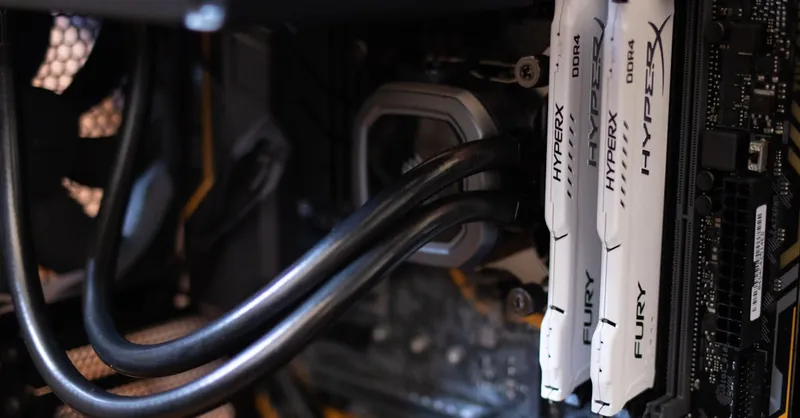
Image courtesy of Athena Sandrini
Choosing the Right C++ Features for Embedded Systems
When programming embedded systems in C++, selecting modern language features that strike the optimal balance between efficiency and readability is paramount. Unlike desktop or server applications, embedded environments demand a cautious approach to features that may introduce hidden overhead or complicate resource management. The key is to leverage the power of C++11 and later standards while prioritizing deterministic behavior and minimal runtime cost.
Embrace Compile-Time Computations and constexpr
One of the most beneficial modern C++ features for embedded development is constexpr. This allows computations to be evaluated at compile time rather than runtime, reducing CPU cycles and runtime memory usage—both critical on constrained devices. Use constexpr for:
- Constants and configuration parameters.
- Functions that can generate lookup tables or fixed arrays.
- Enabling static assertions with
static_assertfor safer and clearer compile-time validation.
Prefer Templates and Inline Functions Over Polymorphism
Templates provide powerful compile-time polymorphism, eliminating the overhead associated with virtual functions and dynamic dispatch. This is especially useful in embedded systems to:
- Implement highly efficient and type-safe abstractions without runtime cost.
- Generate specialized code paths for hardware manipulation or protocol handling.
- Avoid costly vtable lookups in time-sensitive or interrupt-driven contexts.
Inline functions complement this by reducing function call overhead when used judiciously, further boosting performance.
Use Smartly Selected Standard Library Components
While the full C++ Standard Library may be too heavyweight for some embedded targets, many features from the C++ STL can be used effectively if chosen carefully:
std::arrayoverstd::vectorfor fixed-size, stack-allocated containers.- Lightweight utility types like
std::pairandstd::optionalto improve code clarity without dynamic allocations. - Avoid features that rely heavily on dynamic memory, exceptions, or RTTI.
Several embedded-focused STL implementations or subsets are available (e.g., Embedded Template Library (ETL)) that provide safer, resource-conscious alternatives.
Minimize or Disable Exceptions and RTTI
Exceptions introduce runtime overhead and unpredictable control flow, making them often unsuitable for embedded systems requiring deterministic behavior. Likewise, Run-Time Type Information (RTTI) adds extra code size and complexity. Unless your application demands these features explicitly, it’s advisable to:
- Compile with exceptions disabled (
-fno-exceptions). - Avoid using RTTI or disable it with compiler flags.
This leads to leaner binaries and more predictable execution—a crucial requirement for safety-critical embedded code.
Focusing on these core C++ features tailored to embedded constraints will help you write code that is not only efficient and fast but also maintainable and readable. By thoughtfully adopting modern C++ constructs designed for compile-time evaluation and avoiding costly runtime features, your embedded projects—whether on Raspberry Pi or microcontrollers—will achieve optimal performance and reliability.
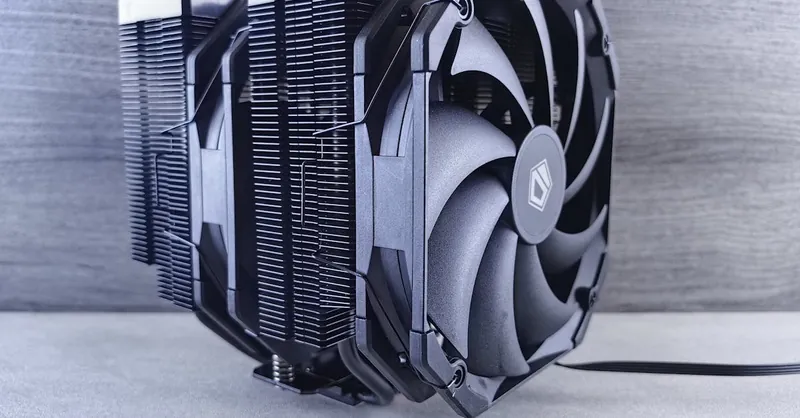
Image courtesy of Andrey Matveev
Effective Memory Management in Embedded C++: Static vs Dynamic Strategies
Memory management is a cornerstone of reliable and efficient embedded C++ programming. Given the tight memory budgets in Raspberry Pi microcontrollers and similar constrained environments, understanding when and how to use static and dynamic memory allocation is crucial to prevent fragmentation, leaks, and crashes.
Prioritize Static and Stack Allocation
Whenever possible, favor static or stack allocation over dynamic memory. Static objects and stack variables have deterministic lifetimes, fixed memory footprints, and negligible allocation overhead—ideal for embedded devices with limited RAM. Key best practices include:
- Use global or static variables carefully to avoid unintended side effects, but leverage them for buffers and configuration data that persist through runtime.
- Prefer local variables and fixed-size arrays allocated on the stack to minimize dynamic allocation.
- Employ
std::arrayorconstexprarrays to define fixed buffers and lookup tables with compile-time size guarantees.
This approach enhances predictability and simplifies debugging by avoiding the runtime costs and fragmentation risks associated with heap usage.
Use Dynamic Memory Sparingly — and Safely
Sometimes dynamic allocation is unavoidable, especially in applications requiring variable-sized data structures or complex state management. In these cases:
- Limit the use of
newanddeleteto initialization phases or controlled contexts to avoid runtime fragmentation. - Implement custom memory pools or fixed-block allocators that allocate objects from pre-reserved memory chunks, ensuring efficient reuse and minimal fragmentation.
- Integrate smart pointers such as
std::unique_ptrfor controlled ownership and automatic deallocation, but always verify compatibility with your embedded runtime constraints. - Avoid raw pointers whenever possible, and never neglect rigorous null checks and pointer validity to prevent undefined behavior or memory corruption.
Prevent Memory Leaks and Dangling References
Memory leaks can be catastrophic in embedded systems, depleting scarce RAM and causing system instability. To avoid leaks:
- Prefer RAII (Resource Acquisition Is Initialization) patterns, encapsulating resource management within object lifetimes.
- Use static analysis tools and runtime checks tailored for embedded environments to detect potential leaks or misuse of pointers.
- When dealing with interrupts or concurrency, carefully design memory access with synchronization primitives or atomic operations to prevent race conditions leading to memory corruption.
Adopting these memory management best practices results in robust embedded C++ applications that maintain stability and predictability, crucial for long-running systems like IoT devices or real-time control units. Properly balancing static and dynamic memory strategies enables your Raspberry Pi and microcontroller projects to operate efficiently within memory constraints while avoiding common pitfalls such as fragmentation and leaks.
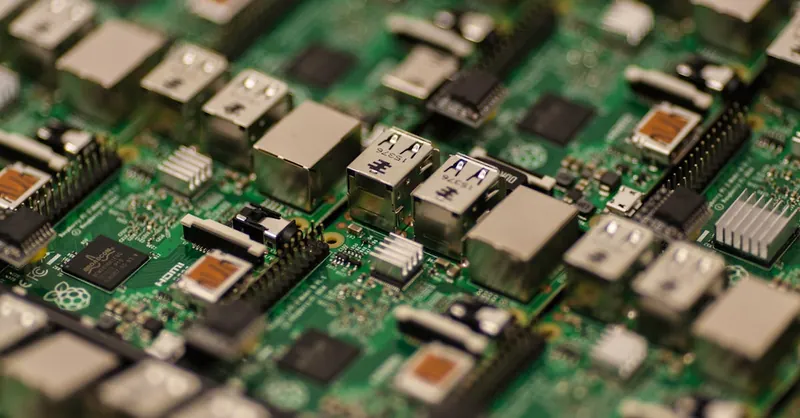
Image courtesy of Craig Dennis
Low-level Hardware Access and Abstraction Techniques in C++
Interfacing directly with hardware registers and peripherals is an integral part of embedded C++ development on platforms like Raspberry Pi and microcontrollers. Achieving safe, efficient, and maintainable low-level hardware access requires balancing direct memory manipulation with well-designed C++ abstractions that introduce minimal or zero runtime overhead. This approach not only preserves system performance but also promotes code clarity and portability across different hardware targets.
Direct Hardware Register Access with Zero-overhead Abstractions
In embedded C++, hardware registers are usually memory-mapped at fixed addresses. Accessing them through raw pointers or volatile-qualified references is common, but unstructured use can lead to errors or hard-to-debug bugs. To safely interface with hardware while maintaining compile-time safety and optimization, consider these techniques:
- Use
volatilepointers or references to ensure the compiler does not optimize out necessary reads or writes to hardware-mapped registers. - Define strongly typed
structs orunions matching peripheral layouts, annotated withvolatilefor correct behavior: ```cpp struct UART_Registers { volatile uint32_t DATA; volatile uint32_t STATUS; volatile uint32_t CONTROL; };
constexpr uintptr_t UART_BASE = 0x4000'0000;
inline UART_Registers& UART = reinterpret_cast``
3. Encapsulate register access within **inline orconstexpr` member functions
Hardware Abstraction without Performance Penalties
While direct register manipulation is necessary, raw pointer usage scattered throughout the code can quickly become unmanageable and error-prone. Employing lightweight C++ abstractions allows developers to retain safety and code structure while avoiding typical overhead of virtual functions or dynamic dispatch:
- Compile-time polymorphism with templates enables selecting or configuring hardware interfaces without runtime cost.
- Use
constexprwrappers to expose read/write operations that the compiler can reduce to simple load/store instructions. - Define scoped enums and bitmask constants for register fields to improve readability and prevent magic numbers.
- Implement
operatoroverloads cautiously for register access classes to mimic natural syntax (e.g.,reg = value;orauto status = reg.read();) but avoid implicit conversions that might generate unintended instructions.
Best Practices for Safe and Efficient Peripheral Control
- Always restrict write access when possible by separating read-only and read-write register fields in your abstractions.
- Avoid dynamic memory allocation or virtual calls within low-level hardware access layers to guarantee deterministic timing and minimal stack usage.
- Document peripheral interfaces clearly with in-code comments and type-safe APIs, which enhances maintainability across team members and project stages.
- When dealing with interrupt-driven or concurrent access, use atomic operations or hardware-specific memory barriers in your abstractions to maintain data consistency and avoid race conditions.
Using these low-level hardware access techniques paired with zero-overhead C++ abstractions ensures your embedded projects on Raspberry Pi and microcontrollers achieve the perfect balance of performance, safety, and maintainability—a vital aspect for any professional embedded systems development workflow.
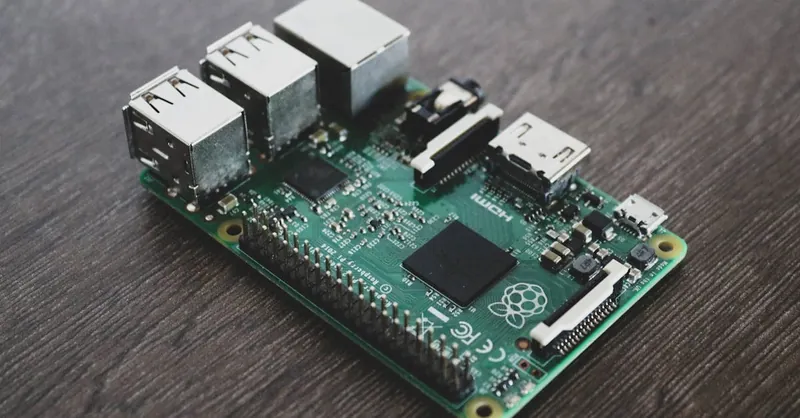
Image courtesy of Alessandro Oliverio
Concurrency and Real-Time Programming Considerations in Embedded C++
Embedded systems often operate under real-time constraints, where timely and predictable responses are crucial. Managing concurrency, handling interrupts, and ensuring proper synchronization in C++ requires specialized strategies tailored to resource-limited environments like Raspberry Pi microcontrollers. Mastering these techniques ensures your embedded applications maintain responsiveness, avoid race conditions, and meet strict timing requirements.
Effective Multi-threading in Resource-Constrained Environments
While multi-threading can improve throughput and responsiveness, embedded systems typically have limited CPU cores and memory, demanding lightweight concurrency approaches:
- Prefer cooperative multitasking or simple threading models over heavy preemptive multitasking to minimize context-switch overhead.
- Use real-time operating systems (RTOS) such as FreeRTOS or Zephyr that provide deterministic thread scheduling, essential for predictable behavior.
- Leverage C++11 and later concurrency features—like
std::thread,std::mutex, andstd::atomic—but evaluate their overhead carefully, as some standard library implementations may be too heavy for deeply embedded targets. - Where possible, utilize lock-free programming techniques with atomic operations to reduce latency and avoid priority inversion issues.
Writing Safe and Responsive Interrupt Service Routines (ISRs)
Interrupts are fundamental to embedded systems for real-time event handling but can introduce complexity if not managed correctly:
- Keep ISRs short and efficient by offloading complex processing to deferred tasks or background threads.
- Use the
volatilequalifier for shared flags or variables accessed within ISRs to prevent compiler optimizations that disrupt correct behavior. - Avoid blocking calls, dynamic memory allocation, or lengthy computations inside ISRs to maintain low latency and system stability.
- Ensure variables shared between ISRs and main code paths are accessed atomically or protected via synchronization primitives to prevent race conditions.
Synchronization Strategies Tailored for Embedded Systems
Proper synchronization prevents data corruption during concurrent access but must be optimized for minimal overhead:
- Use mutexes and semaphores provided by your RTOS or lightweight C++ concurrency primitives if supported by your platform.
- Prefer atomic variables (
std::atomic) for simple shared state flags or counters to reduce lock contention. - In time-critical code, prefer interrupt disabling/enabling for very short critical sections where locking overhead is unacceptable—used cautiously to prevent priority inversion.
- Design your concurrency model to minimize shared state and dependency chains, enabling easier reasoning about system behavior and reducing synchronization needs.
By applying these concurrency and real-time programming best practices in your embedded C++ projects, you can achieve robust, deterministic, and efficient code execution. Whether managing threads on a Raspberry Pi or handling interrupt-driven sensor input on a microcontroller, focusing on lightweight synchronization, minimal ISR logic, and appropriate multi-threading models is key to unlocking the full potential of real-time embedded systems.

Image courtesy of Thirdman
Debugging and Testing Embedded C++ Code: Tools and Techniques for Resource-Constrained Systems
Debugging and testing embedded C++ applications pose unique challenges due to limited processing power, scarce memory resources, and close hardware interaction. Unlike desktop environments where powerful debuggers and plentiful system resources are available, embedded developers must rely on specialized tools and strategies that provide accurate insight into hardware-near code execution without impacting real-time performance. Mastering these methods is essential for diagnosing and resolving issues efficiently in Raspberry Pi and microcontroller projects.
Key Debugging Tools for Embedded C++
-
In-Circuit Debuggers (ICDs) & JTAG/SWD Interfaces
Hardware debugging probes connect directly to microcontroller debug ports, enabling real-time stepping, breakpoints, and register inspection with minimal intrusion. Popular tools like Segger J-Link or ST-Link support advanced debugging of embedded C++ with minimal latency, providing essential visibility into memory and peripheral registers. -
Serial Output and Logging
Lightweight serial print statements or logging via UART remain a simple yet powerful technique—especially in resource-tight environments where full debugging hardware isn’t available. Structured logging macros can be enabled or disabled at compile-time, minimizing runtime overhead. -
Simulator and Emulators
For early-stage code validation, CPU simulators or platform emulators allow testing embedded C++ logic in a controlled environment. While they don’t perfectly mimic hardware timing or peripherals, simulators help catch logic errors and validate algorithm correctness before deploying to physical devices. -
Memory and Stack Analysis Tools
Embedded-specific static analyzers, heap/stack usage monitors, and runtime detection tools (such as Valgrind alternatives or custom instrumentation) help track memory leaks, stack overflows, and buffer overruns, which are critical in embedded C++ systems.
Effective Testing Techniques Tailored for Embedded C++
-
Unit Testing with Cross-Compilation
Writing modular C++ code enables unit testing on host machines before deployment, using frameworks like GoogleTest or Catch2. Cross-compilation toolchains facilitate validating logic in isolation, dramatically improving code quality while reducing dependency on hardware for every test iteration. -
Hardware-in-the-Loop (HIL) Testing
Integrating actual hardware devices or peripherals into automated test setups allows functional validation under realistic conditions. HIL testing is invaluable for embedded C++ projects requiring robust interaction with sensors, actuators, and communication buses. -
Incremental Integration Testing
Gradually combining components—from peripheral drivers to communication stacks—ensures early identification of interface or timing-related bugs. Use mock objects or stubs to simulate hardware responses during initial integration phases. -
Static Code Analysis and Linting
Tools like Cppcheck, Clang-Tidy, and MISRA C++ compliance checkers highlight potential issues related to resource misuse, concurrency bugs, or unsafe operations, enabling detection of subtle faults before runtime.
By combining hardware-aware debugging tools with rigorous testing approaches, embedded C++ developers can significantly reduce time spent on troubleshooting and increase system reliability. Implement these practices to streamline your Raspberry Pi and microcontroller project workflows, ensuring your code behaves correctly under stringent embedded constraints while simplifying maintenance and future enhancements.

Image courtesy of Mikhail Nilov
Best Practices for Embedded Software Architecture: Modularity, Layering, and API Design
Designing maintainable embedded C++ systems for Raspberry Pi and microcontrollers begins with a clear and robust software architecture that prioritizes modularity, layering, and well-crafted APIs. Embedded projects often grow complex as hardware evolves and new features integrate, making clean architectural principles essential to managing complexity, enabling code reuse, and simplifying debugging and testing.
Emphasize Modularity for Scalability and Maintainability
Modularity involves decomposing your embedded application into discrete, loosely coupled components or modules with well-defined responsibilities. This approach:
- Improves code readability by separating peripheral drivers, communication stacks, sensor interfaces, and application logic.
- Facilitates independent development and testing of modules, reducing integration issues and enabling unit test coverage.
- Enhances reusability, allowing modules to be ported or adapted across projects or hardware platforms with minimal modification.
- Simplifies maintenance and upgrades by isolating changes within specific modules without widespread ripple effects.
Use namespaces and meaningful folder structures in your C++ project to organize modules logically. Define module interfaces clearly using pure abstract base classes or templated interface concepts to decouple implementation from usage.
Adopt Layered Architecture to Define Clear Abstractions
A well-designed layered architecture separates the embedded C++ system into hierarchical layers, each with a specific role and limited knowledge of other layers. Typical layers include:
- Hardware Abstraction Layer (HAL): Directly interfaces with hardware registers and peripherals, encapsulating low-level details.
- Device Drivers Layer: Implements reusable drivers for sensors, actuators, and communication interfaces, relying on HAL.
- Middleware Layer: Provides communication protocols, data processing, or RTOS abstractions.
- Application Layer: Contains business logic, control algorithms, and user interaction code.
This layering promotes separation of concerns, enabling developers to change hardware or RTOS implementations without affecting higher-level application code. It also eases porting your embedded software across different microcontrollers or Raspberry Pi models by swapping out only the lower layers.
Design Clear and Consistent APIs for Inter-Module Communication
Robust API design is key to unlocking modularity and layering benefits in embedded C++ projects. Follow these best practices for API development:
- Define concise and stable interfaces that expose only necessary functionality, hiding implementation details to reduce dependencies.
- Use strong typing and enums for parameters and return values to improve clarity and prevent misuse.
- Avoid global state where possible; instead, design APIs with explicit context objects or handle parameters to manage resource ownership.
- Document API usage, expected inputs/outputs, and error handling strategies to guide future maintenance and extension.
- Where applicable, design asynchronous or event-driven APIs to facilitate non-blocking execution in real-time systems.
By investing time in a structured software architecture emphasizing modularity, layering, and clear API interfaces, your embedded C++ projects will be more adaptable, less error-prone, and easier to scale. This foundation supports long-term project success and smoother collaboration, whether you’re building hobbyist Raspberry Pi applications or complex industrial-grade microcontroller systems.

Image courtesy of Pachon in Motion
Optimizing Build Systems and Toolchains for Embedded C++
Efficient embedded C++ development hinges not only on writing clean, optimized code but also on configuring the build system and toolchains adeptly to match the target hardware constraints. Properly setting up cross-compilation environments, managing debugging symbols, and fine-tuning compiler flags can drastically enhance compile times, binary size, and runtime performance—all critical for resource-limited embedded platforms like Raspberry Pi and microcontrollers.
Setting Up Cross-Compilation Toolchains
Since embedded devices typically have different CPU architectures than host development machines, using a cross-compiler is essential. Cross-compilation allows you to build executable binaries for your embedded target system from a desktop or server environment efficiently. Best practices include:
- Choose a toolchain targeting your specific processor architecture, such as
arm-none-eabi-gccfor ARM Cortex-M microcontrollers or GCC with appropriate Raspberry Pi target options. - Use containerized environments or toolchain managers (e.g., Yocto Project, Buildroot, or crosstool-ng) to maintain reproducible builds and isolate dependencies.
- Configure your Makefiles or CMake scripts to detect the target architecture and set cross-compilation variables like
CC,CXX, andLDappropriately. - Validate the toolchain by compiling simple "hello world" or peripheral test programs before scaling to complex applications.
Ensuring a robust and consistent cross-compilation setup reduces integration headaches and enables reliable automation pipelines for continuous integration and deployment.
Managing Debugging Symbols and Stripping Binaries
Debugging embedded applications often requires access to symbols and source mappings within the binary, but including full debug information can inflate code size, which is precious on embedded devices. Use these strategies:
- Compile with debugging symbols enabled (
-gflag) during development to facilitate breakpoint setting, stack traces, and source-level stepping. - Strip debug symbols from final firmware releases using tools like
stripto minimize binary size while keeping separate symbol files (.elfor.map) for post-mortem analysis. - Employ split debug info methods supported by some toolchains, which separate debug data from executable binaries but keep them linked for debugging sessions.
- Use map files generated during linking to analyze code size distribution and identify functions or sections with unexpectedly large footprints.
Balancing debug capabilities and binary size ensures both effective troubleshooting and efficient firmware deployment.
Fine-Tuning Compiler Flags for Embedded Efficiency
Compiler optimization flags have a direct impact on code size, speed, and power consumption in embedded systems. Key recommendations include:
- Use optimization levels tailored for embedded targets:
-Osto prioritize small code size.-O2or-O3for maximum speed, but only if code size and power budget allow.- Enable specialized flags such as
-ffunction-sectionsand-fdata-sectionscombined with linker flag--gc-sectionsto remove unused code and data, reducing binary footprint. - Disable runtime features not supported or unnecessary in embedded environments:
-fno-exceptions-fno-rtti-fno-builtinfor fine-grained control over standard functions.- Use architecture-specific flags (e.g.,
-mcpu=cortex-m4,-mfpu=fpv4-sp-d16) to leverage hardware capabilities and instructions. - Enable link-time optimization (
-flto) to allow the compiler to optimize across translation units, often yielding smaller and faster code.
Regularly audit compiler flags and toolchain versions to stay aligned with new optimizations and ensure compatibility with your embedded platform.
By investing in an optimized build system and thoughtfully crafting your compilation toolchain configuration, you empower your embedded C++ development to be more efficient, maintainable, and performant. This foundation complements the code-level best practices covered earlier, resulting in seamlessly integrated, production-ready Raspberry Pi and microcontroller applications.

Image courtesy of Mikhail Nilov
Leveraging Open-Source Libraries and Frameworks in Embedded C++ Projects
One of the most effective strategies to accelerate embedded C++ development on platforms like Raspberry Pi and microcontrollers is to leverage proven open-source libraries and frameworks tailored for resource-constrained environments. These libraries help reduce development time, improve code reliability, and provide standardized solutions for common embedded challenges such as peripheral drivers, communication protocols, real-time operating systems (RTOS), and hardware abstraction layers. However, integration must be done thoughtfully to maintain the tight control over performance and memory usage inherent to embedded projects.
Popular Open-Source Libraries for Embedded C++
-
Embedded Template Library (ETL)
A lightweight, header-only C++ library offering STL-like containers and algorithms designed explicitly for embedded systems. ETL avoids dynamic memory allocation by using fixed-size buffers, making it ideal for memory-limited microcontrollers. -
FreeRTOS and Zephyr RTOS
Widely adopted open-source real-time operating systems that provide thread management, synchronization primitives, timers, and inter-task communication. These RTOS frameworks include C++ wrappers or allow seamless integration with C++ applications, helping manage concurrency and real-time constraints effectively. -
mbed OS
Developed by Arm, mbed OS is a platform designed for IoT and embedded devices, featuring libraries for networking, security, storage, and device drivers. It supports C++ application development with modular libraries optimized for low footprint. -
Boost Embedded and µOS++
Specialized subsets or adaptations of well-known C++ libraries like Boost, targeted at embedded platforms offering utilities such as fixed-size smart pointers, compile-time programming tools, and embedded-safe containers. -
Hardware Abstraction Libraries
Libraries such as STM32Cube and Raspberry Pi’s WiringPi (or its C++ wrappers) abstract low-level GPIO, SPI, UART, and I2C peripherals into readable, maintainable C++ interfaces, expediting hardware control without compromising efficiency.
Best Practices for Effective Integration
-
Evaluate Library Footprint and Dependencies: Always analyze the code size, RAM usage, and dependency tree of third-party libraries to ensure they fit within your embedded system’s resource constraints.
-
Prefer Header-Only or Compile-Time Libraries: Header-only libraries often result in better inlining and smaller binaries. Libraries leveraging
constexprand template metaprogramming generate highly optimized code without runtime overhead. -
Isolate and Modularize Library Usage: Encapsulate third-party library calls behind well-defined interfaces or adapters within your architecture layers. This modularity allows swapping libraries without affecting the application logic and facilitates unit testing.
-
Configure and Customize at Build-Time: Many open-source embedded libraries offer compile-time configuration options to enable or disable features, which can drastically reduce code size. Use these options to tailor the library to your project’s exact needs.
-
Stay Updated and Compliant: Monitor updates and patches for security and bug fixes, and ensure libraries align with your embedded coding standards and toolchain capabilities.
By strategically leveraging open-source libraries and frameworks that are optimized for embedded C++, developers can boost productivity while maintaining tight control over performance metrics and resource usage. Integrating these libraries with sound modular design principles ensures your Raspberry Pi and microcontroller projects remain scalable, maintainable, and efficient—paving the way for faster innovation in your embedded systems development journey.
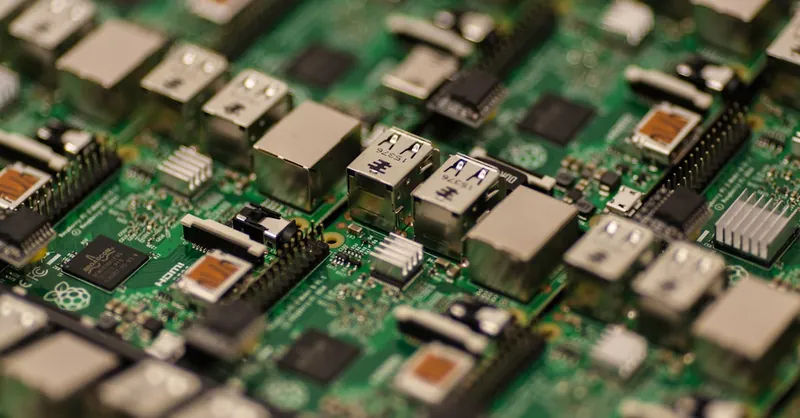
Image courtesy of Craig Dennis
Security and Robustness in Embedded C++ Development
Writing secure and resilient embedded C++ code is essential to ensure stable operation under fault conditions, prevent vulnerabilities, and protect your Raspberry Pi or microcontroller projects from unexpected failures. Embedded systems often operate in exposed environments and handle critical tasks; therefore, fault tolerance and defensive programming must be integral parts of your development process.
Tips for Writing Resilient Embedded C++ Code
-
Validate All Inputs Rigorously
Buffer overruns, injection attacks, and undefined behavior often stem from unchecked inputs—whether they originate from sensors, communication interfaces, or user commands. Always implement strict range and sanity checks, especially when dealing with raw data from peripherals or external sources. -
Use Safe C++ Constructs and Avoid Undefined Behavior
Favor strongly typed enums,constexprvalidation, and RAII patterns to avoid dangling pointers or resource leaks. Avoid unsafe casts, raw pointer arithmetic, and unchecked array accesses. Leveragingstd::optionaland smart pointers helps represent nullable or conditional data safely. -
Apply Defensive Error Handling Without Exceptions
Since exceptions are commonly disabled in embedded builds, design robust error reporting via error codes,std::variant, or out-parameters. Use assertions cautiously and prefer graceful recovery or system reset strategies to handle unrecoverable faults. -
Implement Watchdog Timers and Safe State Recovery
Integrate watchdog timers that automatically reset the system on hangs or stalls, protecting against infinite loops or deadlocks. Design your application to save critical state information periodically, enabling safe recovery upon reboot. -
Minimize Attack Surface and Enable Security Features
Disable unused peripherals and interfaces to reduce vulnerability exposure. Implement authentication and encryption for communication protocols, especially in IoT devices. Employ hardware security features such as Trusted Execution Environments (TEE) or secure boot loaders when available. -
Use Static and Dynamic Analysis Tools
Regularly run static analyzers tailored for embedded C++ (e.g., MISRA compliance checkers) to detect coding standard violations and potential vulnerabilities. Utilize runtime fault detection mechanisms such as stack canaries or memory protection units (MPU) to catch buffer overflows or illegal memory access early.
By prioritizing security and robustness in your embedded C++ code, you significantly enhance system reliability, facilitate maintenance, and safeguard your Raspberry Pi and microcontroller applications against faults and malicious attacks. These proactive strategies are vital for delivering professional-grade embedded solutions that remain stable, predictable, and secure throughout their lifecycle.

Image courtesy of Pixabay
